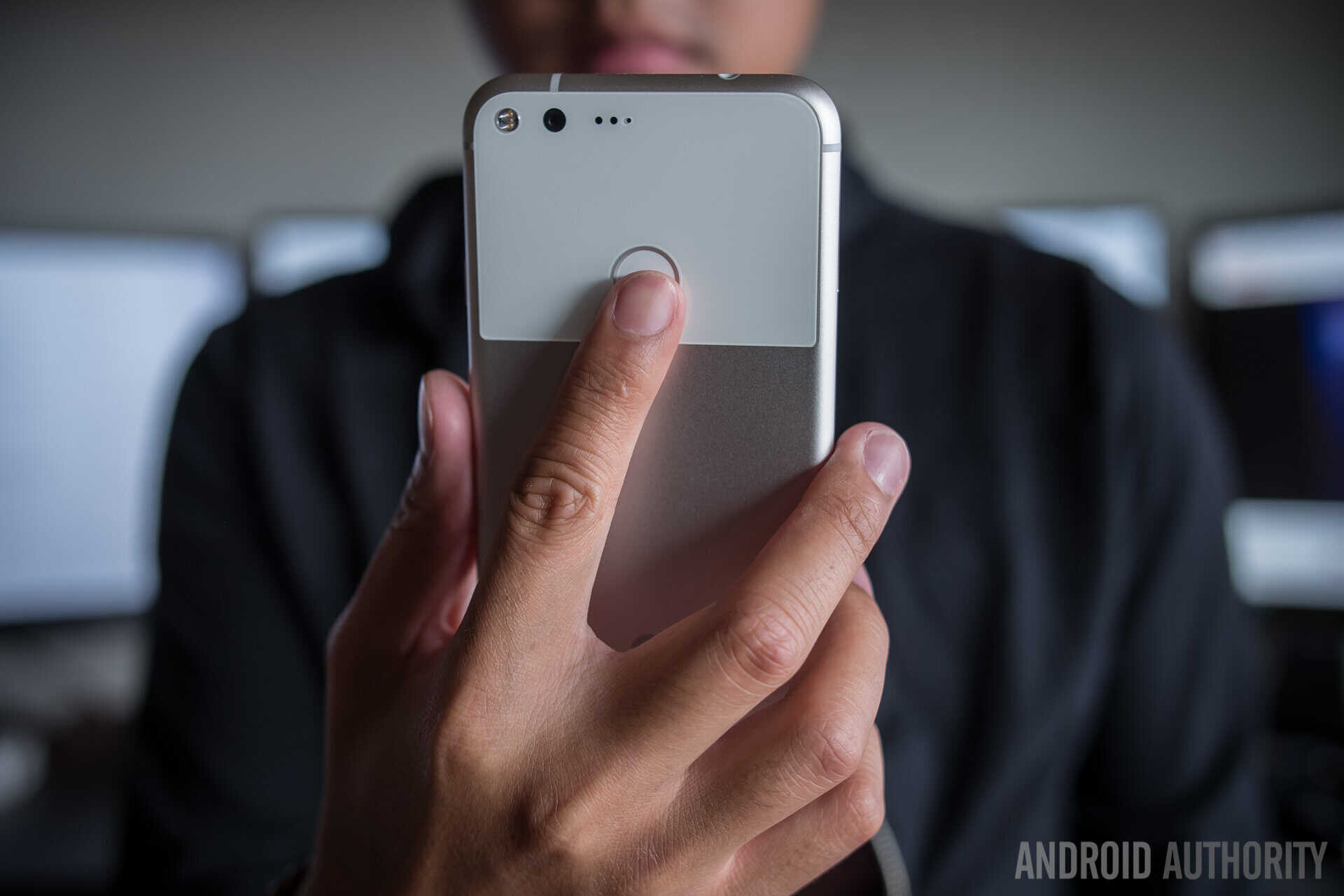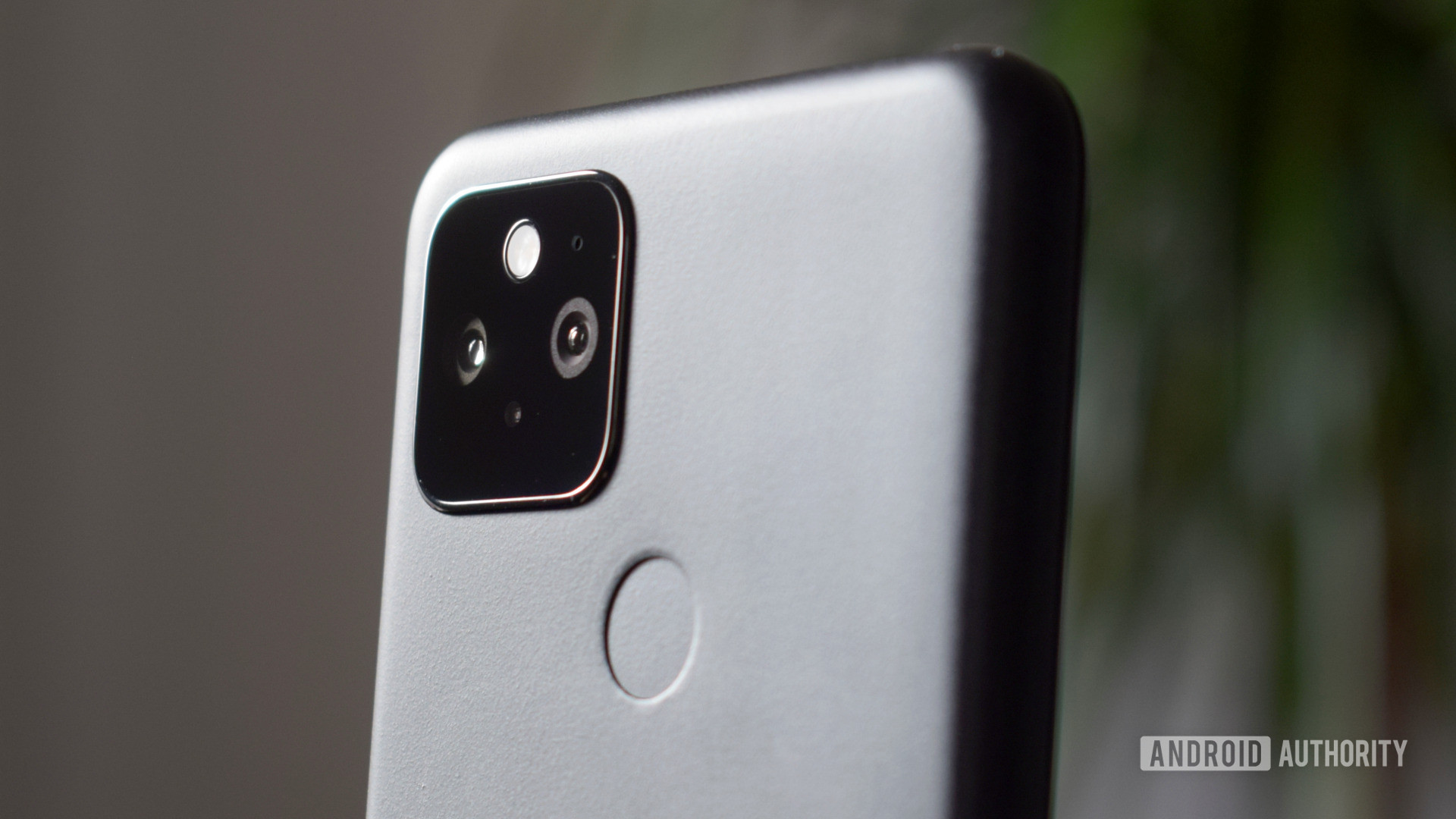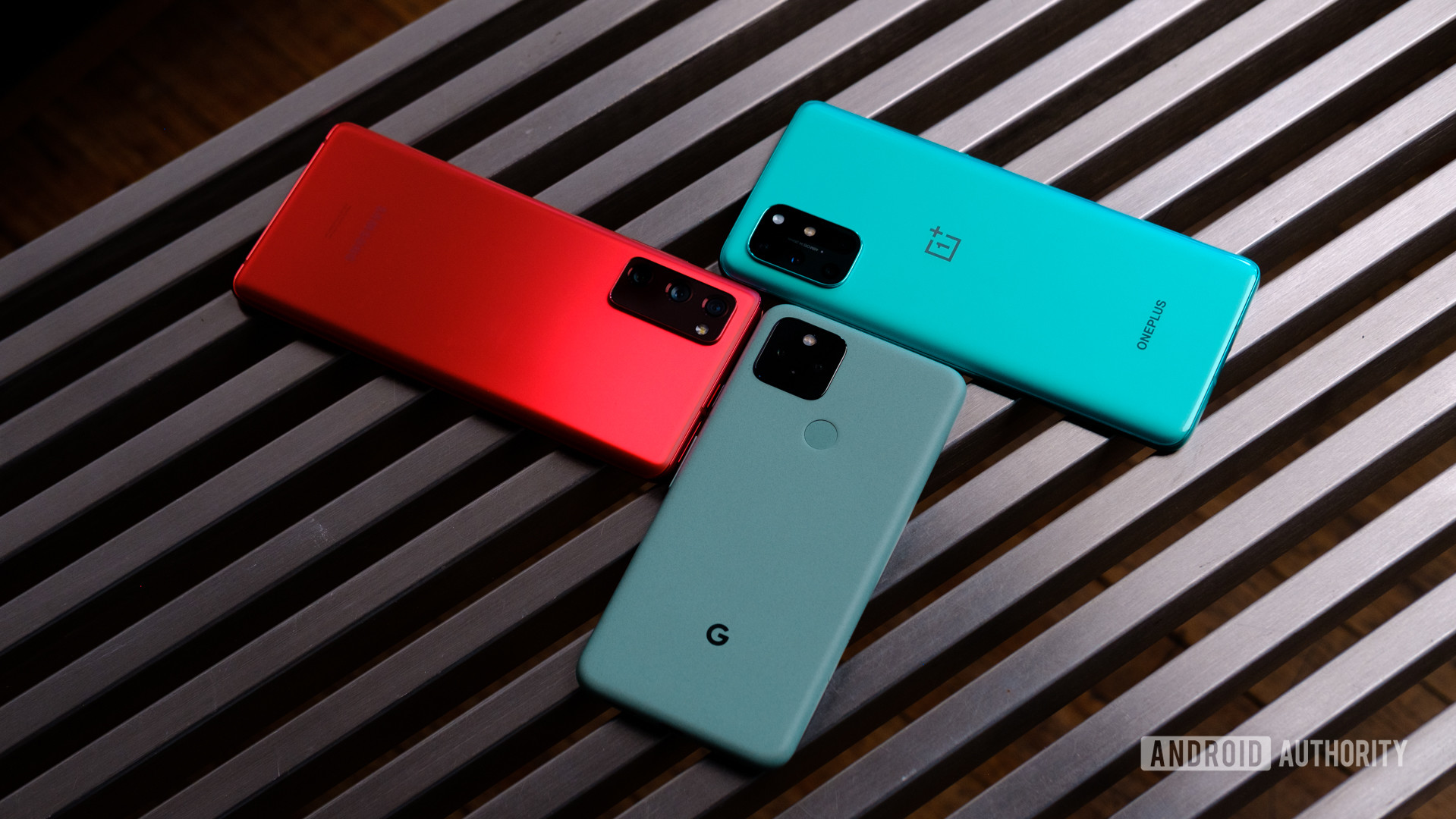Affiliate links on Android Authority may earn us a commission. Learn more.
Pixel 5 vs Pixel 1: How Google's strategy has changed over the years
Google’s transition from the Nexus to its Pixel series coincided with the company’s aspiration to take its products mainstream. The idea was that Pixel devices would sit alongside and compete with Samsung’s Galaxy phones and iPhones in carrier stores.
It’s been four years since the Pixel’s bold introduction, and it’s clear that Google’s strategy with the line has morphed and evolved over time. The 2016-released Pixel 1 and the latest Pixel 5 are aimed at different sectors of the smartphone market. They also have different strengths and weaknesses over their respective competition.
Let’s break down this shift in strategy and discuss why Google’s premier smartphone line has morphed so much in its short lifetime.
The hardware

We first need to look at the highlight features and specs because this is where the strategic shift is most obvious. Take a look at the original Pixel vs a couple of its direct competitors. You’ll notice that it’s very competitive with Samsung and Apple’s devices of the same class. The Snapdragon 821 was the fastest Qualcomm chip on the scene. The memory, display, and camera were competitive too. Even the Pixel’s $649 pricing was similar to its contemporaries. Google’s first Pixel device was aimed squarely at prospective flagship smartphone buyers and was definitely suited to the job.
| Smartphone | Samsung Galaxy S7 | Google Pixel | Apple iPhone 7 |
|---|---|---|---|
| Smartphone Performance | Samsung Galaxy S7 Exynos 8890 4GB RAM | Google Pixel Snapdragon 821 4GB RAM | Apple iPhone 7 Apple A10 Fusion 2GB RAM |
| Smartphone Display | Samsung Galaxy S7 5.1-inch Super AMOLED 2,560 x 1,440 | Google Pixel 5-inch AMOLED 1,920 x 1,080 | Apple iPhone 7 4.7-inch IPS 1,334 x 750 |
| Smartphone Cameras | Samsung Galaxy S7 12MP rear, f/1.8, 1/3-inch, OIS 5MP selfie, f/1.7 UHD 30fps | Google Pixel 12.3MP rear, f/2.0, 1/2.3-inch, EIS 8MP selfie, f/2.4 UHD 30fps video | Apple iPhone 7 12MP rear, f/1.8, 1/3-inch, OIS 7MP selfie, f/2.2 UHD 30fps video |
| Smartphone Battery | Samsung Galaxy S7 3,000mAh 15W charging | Google Pixel 2,770mAh 18W charging | Apple iPhone 7 1,960mAh 5W charging |
The Pixel’s standout features can be seen in this iconic launch ad (embedded below). Ultra-fast charging, unlimited cloud photo storage, a headphone jack, and its incredible camera. At the end of the ad, Google even quickly shows off the specs — something it wouldn’t dream of doing today. Software played a part in the original Pixel’s success, but it was by no means the only factor.
Now, let’s look at the current Pixel’s specs compared to its competitors. You’ll notice that almost every single spec falls below the current flagship level. The processor isn’t as powerful, there’s less memory, fewer and smaller cameras, and slower charging. Granted, the Pixel 5 isn’t a bad phone by any means. It’s built of aluminum, it has a fantastic 90Hz AMOLED display, and it has wireless charging, but it’s far from flagship-level judged purely on its core hardware.
| Smartphone | Samsung Galaxy S20 | Google Pixel 5 | Apple iPhone 12 |
|---|---|---|---|
| Smartphone Performance | Samsung Galaxy S20 Snapdragon 865 Exynos 990 8GB RAM | Google Pixel 5 Snapdragon 765G 8GB RAM | Apple iPhone 12 Apple A14 Bionic 4GB RAM |
| Smartphone Display | Samsung Galaxy S20 6.2-inch OLED 3,200 x 1,440 120Hz | Google Pixel 5 6-inch OLED 2,340 x 1,080 90Hz | Apple iPhone 12 6.1-inch OLED 2,532 x 1,170 60Hz |
| Smartphone Cameras | Samsung Galaxy S20 12MP main, f/1.8, 1/1.76-inch, OIS 12MP ultra-wide, f/2.2 64MP telephoto, f/2.0, 1/1.72-inch 10MP selfie, f/2.2, 1/3.2-inch 8K 24fps, UHD 60fps video | Google Pixel 5 12.2MP main, f/1.7, 1/2.55-inch, OIS 16MP ultra-wide, f/2.2 8MP selfie, f/2.0, 1/4-inch UHD 60fps video | Apple iPhone 12 12MP main, f/1.6, OIS 12MP ultra-wide, f/2.4, 1/3.6-inch 12MP selfie, f/2.2, 1/3.6-inch UHD 60fps video |
| Smartphone Charging | Samsung Galaxy S20 4,000mAh 25W fast charging 15W wireless charging | Google Pixel 5 4,080mAh 18W fast charging 12W wireless charging | Apple iPhone 12 2,815mAh 20W fast charging 7.5W wireless charging |
It arguably does the fundamentals better than the original Pixel did at the time, but that’s likely due to Google’s increased experience in the smartphone market. The Pixel 5’s software, display, and battery life are all much improved compared to the original Pixel. In a funny twist, Google even brought back the rear fingerprint reader we first saw on the original Pixel.
This shift from flagship to mid-range specs for the Pixel 5 was likely a response to criticism leveled at its predecessors. Its direct predecessor, the Pixel 4, was technically a flagship-level smartphone but lacked flagship-level battery life, storage options, video recording, and more. Simply having a top-tier chipset wasn’t the answer. Google’s implementation of high-end silicon wasn’t working and it needed to move away to a feature set that could be more easily polished with its Pixel Experience software. The Pixel 5 manages to do what previous models couldn’t — nail the basics.
The cameras
Speaking of the camera, the Pixel series has always been renowned for having some of the best cameras on any smartphone.
The original Pixel wowed critics and consumers alike with its fantastic photo-capturing capabilities. Its camera hardware was in-line with what other smartphones at the time had. However, the original Pixel’s utterly impressive computational photography carried it far beyond what its competitors were capable of.
Google's incredible computational photography has carried the Pixel's camera for too long.
Fast forward four years and not much has changed on the hardware front for Google’s latest Pixel devices. Sure, there is an extra camera now, but the quality of the hardware has hardly improved.
The Pixel 5’s camera hardware is inferior to many flagships and even some mid-rangers. For one, the IMX363 is only a 12.2MP sensor. This means that sharpness and maximum video-capture resolution are going to take a hit compared to the 48, 64, and 108MP sensors out there. Secondly, the sensor is only 1/2.55-inches in diameter. That’s far smaller than the 1/1.76-inch sensor found in the Galaxy S20 series and the 1/1.43-inch sensor found in the OnePlus 8 Pro. This disparity means that there’s less light hitting the sensor and should theoretically lead to inferior low-light performance and dynamic range compared to its rivals.

Of course, that doesn’t reflect reality, as the deficit in camera hardware is papered over by Google’s computational photography smarts. However, as other firms with comparatively ginormous sensors continue to improve their computational photography, Google will struggle to keep pace unless it makes some drastic changes.
Over the four years, Google’s strategy with the Pixel’s camera was one of iteration. Google took until 2019 to add a second sensor — a 16MP telephoto — at a time when triple-lens setups had become the norm. Even in 2020, Google didn’t add a third rear sensor. It just swapped out the telephoto for an ultra-wide, in what was itself a questionable decision.
Read more: It’s time Google updated Pixel camera hardware to match its stellar software
Why did Google add another sensor? Perhaps to make up for what its software processing couldn’t do. That said, Google’s computational photography is still handling the majority of the heavy lifting. Google has introduced new features over the years including Portrait mode, Night Sight, Super Res Zoom, astrophotography, and Live HDR. These have helped propel the outdated hardware along to create a feature-rich camera system that is lightyears ahead of the original Pixel camera experience.
The change in strategy has been seen in the balance of hardware and software. At the beginning, the Pixel camera had a then-good sensor and good processing. This combination pushed it ahead of devices that only had good hardware. Right now, it’s clear to see that Google has put almost all of its eggs in the computational photography basket and has run with its magic formula that, bar Apple, no other company has quite matched… yet.
Market placement

The original Pixel launched in the US for $649 — or $769 for the larger Pixel XL — in 2016, whereas the Pixel 5 launched at $699, four years later. The smartphone market has become increasingly competitive in those four years, from top to bottom. While flagships now go for $1,000+, the Pixel 5 sits in a new category — the super mid-range. These devices trade the fastest chipset for a lower price tag while retaining the elite features expected of a premium phone. Google’s best Pixel device is now dueling with more traditional, power-first affordable flagships like the iPhone 12 and Samsung Galaxy S20 FE, neither of which are the top versions of their respective smartphone families.
The Pixel 5 is the quintessential super mid-ranger. It’s almost entirely focused on software and doesn’t rely on specs to stand out. It’s mid-tier Snapdragon 765G chipset allows for flagship features like 5G connectivity, and high-resolution photo and video capture. However, it doesn’t have the same grunt as many devices in the same price range, let alone the top flagships. This is a massive shift from the original Pixel which tried to compete with Android’s elite.
Continue reading: Did the Snapdragon 765G affordable flagship experiment work?
This shift from a flagship to a mid-ranger will undoubtedly have been influenced by the poor sales of its previous high-end smartphones. Google’s flagship Pixels have been notorious for not keeping up with its competitors. A report published by The Information last year revealed that Google shipped just two million Pixel 4 devices between Q4 2019 and Q1 2020. Sadly for Google, poor Pixel sales is one thing that hasn’t changed since the original Pixel. Despite its massive hype and competent package, the Pixel 1 series was by all accounts a sales flop.
The Pixel 5 strategy could also have been prompted by the uptick in affordable smartphone releases. As companies have launched more $1,000 devices, affordable options have become more enticing. You only need to look at the top-selling smartphones for Q3 of 2020 to see that the vast majority of smartphones that people are buying aren’t $1,000+ flagships.
Google is targeting the broad mid-range with its 2020 Pixel devices.
Of course, the other major change for Google in the four years between the Pixel 1 and Pixel 5 is the introduction of a secondary, low-budget Pixel line.
Right now, Google has three Pixel phones that are priced between $349-$699. The current entry-level model, the Pixel 4a, was critically acclaimed as one of the best smartphones of 2020. Google’s cheapest smartphone isn’t far off from the Pixel 5 in its user experience either. Sure, it lacks the grunt and premium build materials, but it shares the same main camera sensor, very similar software, and is clearly related from a design standpoint. The Pixel 4a 5G is even closer to the Pixel 5 with the same ultra-wide camera and Snapdragon 765G chipset, but with a few design and feature compromises elsewhere.
Is Google’s exclusively-budget approach working? According to IDC, Google sold 7.2 million phones in 2019 which made it the hardware division’s best year so far. That said, it’s still far off top smartphone makers like Samsung, Apple, Xiaomi, and OPPO. Google is specifically targeting the US where the mid-range market is much less competitive. It remains to be seen if Google can carry this momentum into making premium flagships like the Pixel 1 once again.
The future of Pixel
The debut Pixel was Google’s chance to make a big splash in the smartphone market. It had flagship specs, the cleanest software, and a game-changing camera. Google was clearly aiming to compete with the Samsung Galaxy S7 and the Apple iPhone 7. By contrast, the Pixel 5 is a safe, essentials-first, super mid-range smartphone that sells itself on the basis of excellent software and computational photography. It’s aimed at those looking for a great all-round smartphone that doesn’t break the bank.
The Pixel 5 is a far cry from the OG Pixel’s no-compromise promise some four years ago, but the change in strategy seems to be going rather well so far. However, it’s still early days. We’ll just have to wait and see what the company can do going forward with the Pixel 6 and beyond.
Google's bet on the mid-range market could pay off in the long term.
It would be great to see Google return to the flagship market with a device that could wow as many as the original did. I’d personally love it if Google created a flagship smartphone with a huge camera sensor, super-fast charging, and a crazy fast screen. Something that could compete with the Galaxy S20 Ultra and OPPO Find X2 Pro.
For now, though, Google’s educated bet on the growing mid-range market is one that could pay off long-term.